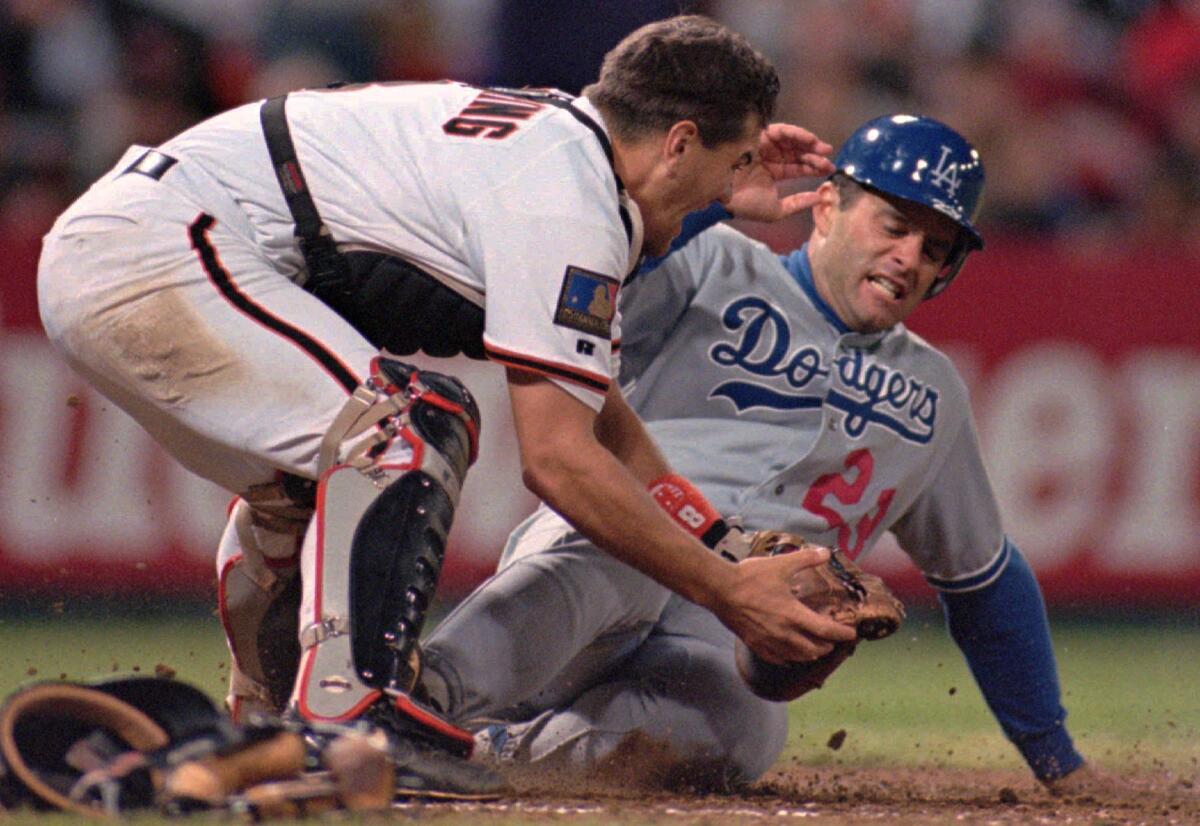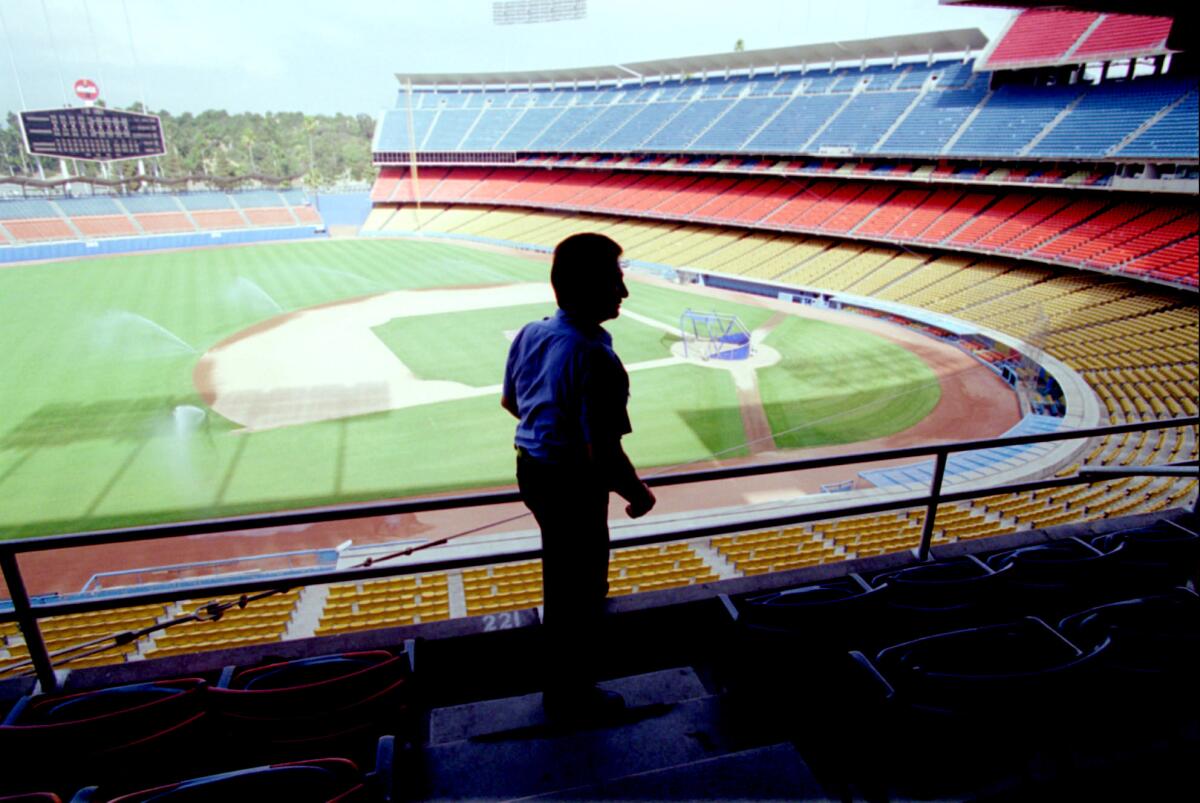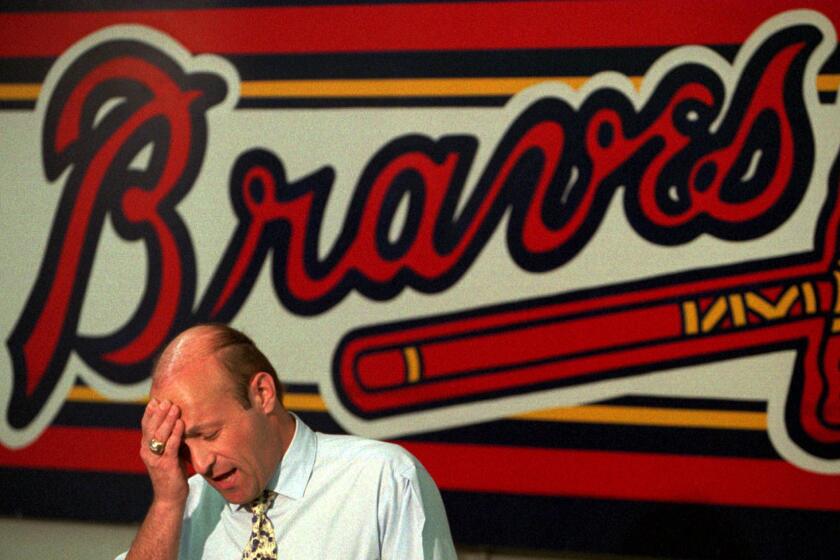MLB 1994 strike: Dodgers were hitting their stride when the season abruptly ended

- Share via
Five days before the longest work stoppage in Major League Baseball history, Orel Hershiser took the mound at Mile High Stadium, in front of an announced sellout crowd of 70,372, understanding it might have stamped the end of an era.
“When I pitched at home last time I was wondering if that could be the last time I pitch in Dodger Stadium,” Hershiser said that day. “And today I wondered if it would be the last time I pitched as a Dodger, period. I thought, ‘This is odd. This could be it.’”
It was Aug. 7, 1994. Hershiser held the Colorado Rockies to one run and two hits over six innings. He was 35 years old and would be a free agent at the end of the season. When exactly the season would end was unknown.
Hershiser was involved in negotiations on behalf of the players.
“I knew about the labor strife coming and I knew we had set a hard date on when something needed to be done and I knew there wasn’t much movement going on,” Hershiser said last week. “So I didn’t predict anything. I was just kind of sending out a possibility.”

25th anniversary of baseball strike
A look back at the 1994 major league strike.
Hershiser would pitch in 10 more games in a Dodgers uniform, but not for another six years, after an industry-altering 232-day strike and stints with the Cleveland Indians, San Francisco Giants and New York Mets. Those 10 appearances were his last in the major leagues. He was 41.
In 1994, he had a 3.79 earned-run average in 21 starts for the Dodgers. They were just 58-56, 16 games behind the pace-setting Montreal Expos in the National League, but stood 3-1/2 games ahead of the Giants for first place in the NL West and were playing their best baseball when the players association carried through on its threat.
“We clearly weren’t the best team that year,” said Eric Karros, the Dodgers’ first baseman. “So it’s not like ‘Hey, man, that was our best Dodger team that could’ve won a World Series.’ But we were good.”
The year began with the Dodgers committing to two of their young stars. The club signed 25-year-old catcher Mike Piazza, the 1993 NL rookie of the year, to a three-year, $4.2-million contract in February. Later in the month, they agreed to a three-year, $6.15-million deal with the 26-year-old Karros, the 1992 NL rookie of the year. The franchise had never signed a player with fewer than three years of service time to a multi-year deal. The pacts, without context, indicated harmony between management and labor.
But the sides were publicly at odds. The looming stoppage hung over the season from spring training through the summer.
“You’re talking about it with your friends and family,” Hershiser said. “You’re talking about it with your agent. You’re talking about it with your teammates. You’re talking about it with the clubhouse guys. It’s not just the economy of baseball and players. It’s the economy of the concession people, it’s the economy of the people working in the parking, it’s the economy of the clubhouse kids. It’s everybody. It relates to everybody.”

By the end of June, a strike appeared almost certain. By the end of July, a date was announced. It would begin Aug. 12, the day after the Dodgers concluded a three-game series against Cincinnati.
“We just thought it would be a work stoppage of a week, maybe, or two weeks or whatever,” Karros said. “Nobody anticipated the season to be over.”
The Dodgers played their final three games at Riverfront Stadium. Before the second game, a Dodgers comeback win, manager Tommy Lasorda delivered a rousing speech as the impending reality began to set in.
Deion Sanders and Barry Larkin were atop the Reds’ lineup in the series finale. Angel Hernandez was the home-plate umpire. Ramon Martinez tossed a complete game in the Dodgers’ 2-0 win. Right fielder Raul Mondesi, the rookie of the year favorite, tallied his league-leading 16th outfield assist. Third baseman Tim Wallach, enjoying one of his best seasons, belted his 23rd home run.
“We were playing really well and felt like we were just hitting our stride and we were going to be a factor,” Wallach said.
Wallach was one of the players who’d been through the 1981 strike. That was his first full season. He was 23. A long career was ahead. He absorbed the time lost and moved on, but it was different in 1994. He was 36 and the finish line was approaching. When the strike started, he went home to Orange County to wait it out. On Sept. 14, Wallach’s 37th birthday, commissioner Bud Selig canceled the remainder of the season.

“After the one in 1981, I didn’t think there would be another one that lasted,” said Wallach, now the Miami Marlins’ bench coach. “I certainly didn’t expect not to have a World Series that year. I wasn’t sure what was going to happen. I just know that I never expected us to not finish that season.”
In September, Karros accused the owners of not negotiating in good faith. He recalls going on a local radio show to outline the players’ thinking and reasoning for the strike. It went poorly.
“I got crushed for it,” Karros said. “So after that I was done trying to explain it.”
Karros traveled to Washington D.C. alongside other players to lobby on the union’s behalf. Hershiser, deeply involved in negotiations, spent time in both New York and Washington representing the union.
When the strike finally ended in April, Hershiser chose to sign with the Indians over the Giants. Karros played eight more years with the Dodgers while a herniated disk limited Wallach to 97 games in 1995. He never was the same and retired after the 1996 season.
“I look back at that at times,” Wallach said, “and wish we could’ve finished that out.”
On the 25th anniversary of the most notorious work stoppage in sports, The Times takes a look a the impact the 1994 Major League Baseball strike had on the game, its players and its fans.
More to Read
Are you a true-blue fan?
Get our Dodgers Dugout newsletter for insights, news and much more.
You may occasionally receive promotional content from the Los Angeles Times.









